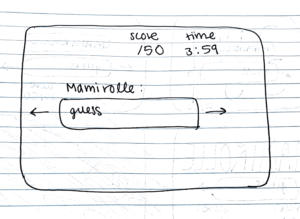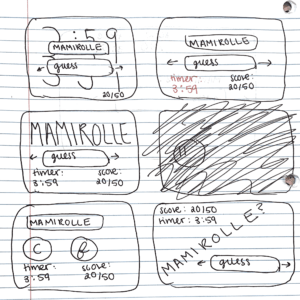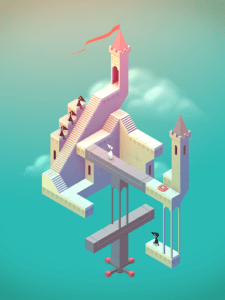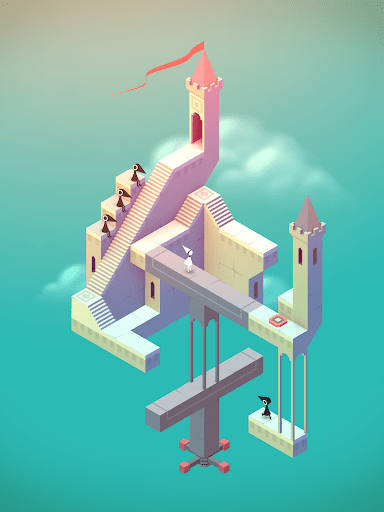Completed Exercises:
The core components of Cheese or Font are:
- The individual text box that appears during gameplay
- The text boxes where users make a guess for each font
- The “PLAY QUIZ” button
- The 5 minute timer that runs during gameplay
- The final score out of 50
The supportive components are:
- The doubled instructions to “Enter C or F”
- The doubled labels asking “Cheese or font?”
- The table of individual Cheese or Font prompts (the words that the user has to guess
And finally, the extraneous components are:
- The header at the top of the webpage offering an introduction to the game
- All of the ads on the site
- The comments at the bottom of the page
Sketch of core elements:

Thumbnail drawings (disregard center right image):

Proximity in design:
In my opinion, the timer and the score should be displayed together, as they both serve an informational role in the game, and it saves the user time if they only have to look to one section of the screen to read both. I also think that the guess should be located near the buttons to travel between prompts, because users should have the option to quickly switch between words while guessing. I think that the timer and guess entry box serve entirely different purposes and should be located far away from each other, especially so that the changing numbers on the timer don’t distract the user while guessing.
Screenshot of game:

Explanation:
For this prompt, I selected Monument Valley, which I played in high school and have always thought was an exceptionally beautiful game. Other than the fact that the game is almost a work of art, I think it equips a couple of key graphic design principles really effectively: the colors in the game serve to emphasize different entrances and paths throughout each maze without contrasting too heavily with the game’s background, resulting in a tranquil feel to the whole game, and the graphics are heavily incorporated into gameplay, which relies on players discovering different optical illusions in the maze to solve it. I also think the designers’ use of size—only key details are displayed to the user, and more are revealed only as they continue to solve each level—prevents the game from feeling overwhelming, and allows players to focus on each level rather than the details in the character they lead around the mazes.



